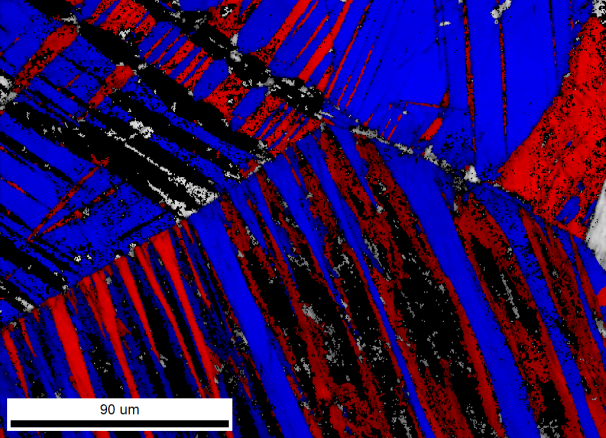Full project name:
Transformation induced plasticity in titanium alloys and high entropy alloys
Project Details
This junior project aims on the design and manufacturing of a new class of interstitial Ti alloys and refractory metals high entropy alloys (HEAs) exhibiting the transformation induced plasticity (TRIP) effect. To achieve the TRIP effect in Ti alloys with increased content of interstitial oxygen (i.e. increased strength) and in HEAs, the composition must be carefully tuned with respect to the stability of bcc phase. Main applicant will employ his experiences with developing new Ti alloys and the fact that metallurgy of bcc HEAs is strikingly similar to the metallurgy of bcc Ti alloys. Manufactured materials will be thoroughly characterized by a wide variety of experimental techniques including scanning and transmission electron microscopy, x-ray, electron and neutron diffraction. These results will be correlated with mechanical properties determined by tensile tests complemented by digital image correlation. The effect of composition variations on the TRIP effect will be assessed to obtain the material with the best combination of strength and ductility.
-
Principal Investigator
Dr. Josef Stráský -
Team
4 postdocs, 5 students -
Duration
2021-2025 -
Research area
TRIP/TWIP effects in Ti alloys and HEA

Dr. Josef Stráský
Principle investigator
Current position: Postdoctoral researcher at the Department of Physics of Materials
Main field: Titanium alloys and high-entropy alloys
Fields of interest and expertise: Titanium alloys are the principal field of my research activities. Study in the physics of titanium alloys involves investigation of microstructure, thermomechanical treatment, phase transformations, mechanical properties and also applications of titanium alloys, namely in medicine. Our team welcomes any international cooperation considering titanium alloys and their applications.
Role of MGML in the Project
MGML instruments will be employed for arc melting of Ti alloys and HEA in laboratory amount, their characterization by XRD measurements and also for the protection of samples during thermal treatment by encapsulating into quartz tubes.

